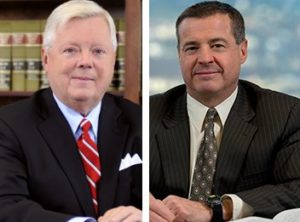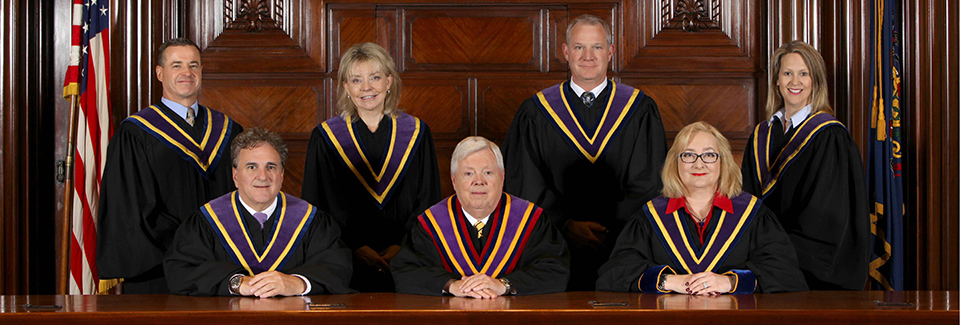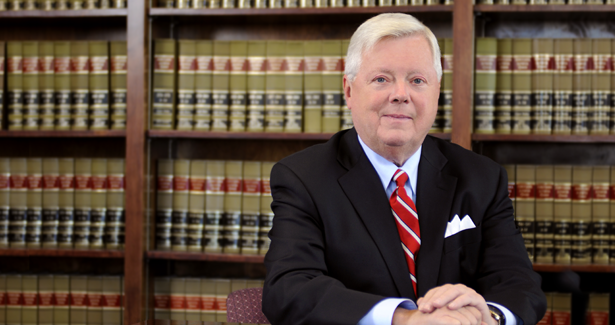
Split Pa. Supreme Court leaves Nationwide free of $21M bad-faith judgement
By onAnnouncements | Business Practices | Insurance | Legal | Market Trends
A deadlocked Pennsylvania Supreme Court on Tuesday voted to let stand a state Superior Court ruling overturning a $21 million bad faith ruling against Nationwide.
The Superior Court had held in a 2-1 2018 decision that Common Pleas Judge Jeffrey Sprecher overreached in a 2015 ruling on Nationwide’s behavior related to a Jeep left unsafe after repairs tied to a Blue Ribbon auto body shop.
The Supreme Court on Tuesday declared itself “divided in a fashion which prevents a majority disposition” and therefore dismissed the appeal by the Jeep’s lessee. (Justice Christine Donohue didn’t participate in the case.) The move means the Superior Court decision remains intact.
No official vote exists to elaborate on the division. However, four of the six justices implied in separate opinions Tuesday how they would have ruled.
Justices David Wecht and Sallie Mundy’s opinion indicates they would have reversed the Supreme Court decision and restored the $21 million award, while Chief Justice Thomas Saylor and Justice Max Baer’s opinion states they would have affirmed it. The views of Justice Debra Todd and Kevin Dougherty are a mystery.
The background
Nationwide had suggested plaintiffs Daniel and Sheryl Berg (who died during the course of the litigation) have their 3-month-old, leased 1996 Jeep Grand Cherokee repaired at one of its direct repair program shops following a 1996 crash, according to a 2017 summary of the case by collision industry attorney Erica Eversman and another summary by plaintiffs’ attorney Mayerson Law.
Nationwide attorney Robert Heim of Derecht said Nov. 21 the record showed that plaintiff Daniel Berg selected the Blue Ribbon shop, Lindgren Chrysler-Plymouth, based on prior experience with the repairer.
Lindgren estimated Sept. 10, 1996, the repair would cost $12,326.50, but also had called the Grand Cherokee a total loss given its frame damage. Nationwide opted not to total the vehicle, and a claims log item notes: “REPAIRS ARE APPROXIMATELY 50% of ACV NATIONWIDE WILL NEVER RECOVER THE DIFFERENCE IN SALVAGE VALUE.”
Four months later, the Jeep Grand Cherokee work was finished, with some of the frame work outsourced to a third party (K.C. Auto) without the Bergs’ knowledge. The vehicle was unsafe, but Nationwide either didn’t inspect it as it should have or did inspect it and didn’t tell the Bergs, Sprecher concluded in 2014.
Sprecher in 2015 decried Nationwide’s attempt to use a “scorched earth” litigation policy costing $3 million in its own attorneys fees and notes “several legal duties and fiduciary obligations that it recklessly disregarded.”
He awarded $18 million plus another $3 million based on what Nationwide paid in its own attorneys. The Superior Court’s overturning of Sprecher’s decision appears to mean that Nationwide would only be responsible for the $295 in actual damages a jury awarded for finding Nationwide violated Pennsylvania’s unfair trade practices law.
The jury also determined Lindgren should have to pay $1,925 in compensatory damages.
Conflicting views
Wecht’s opinion, joined by Mundy, found that the appellate Superior Court should have given Sprecher significant deference because “because the insured has no right to a jury trial” in an insurance bad-faith claim.
“When an insured obtains a bad faith verdict in a bench trial, appellate courts should only reverse in the most egregious of cases when the trial court has committed reversible error,” Wecht wrote. “If an appellate court is not held to the abuse of discretion standard of review, then a bad faith verdict winner will have no confidence in the verdict. As an error-correcting court, the Superior Court should, as this Court has held, afford the trial court’s findings of fact the same weight and effect as a jury verdict, and should only disturb the trial court’s findings if they are unsupported by competent evidence or the court committed legal error.
“In this case, the Superior Court not only invalidated the trial court’s verdict, but also took the remarkable step of directing judgment in Nationwide’s favor. Once the trial court enters a finding of bad faith, the insurer cannot secure JNOV in the appellate court unless the insurer is entitled to judgment as a matter of law, or the evidence was such that no two reasonable minds could disagree that the outcome should have been in the insurer’s favor.”
Saylor, joined by Baer, raised an issue with Sprecher’s partiality, noting “the trial judge inexplicably engaged in a protracted we-the-consumer discourse spanning six pages of the opinion.” Saylor called the decision to “prolifically step out of the judicial role and align himself personally with the interests of insurance consumers, such as the Bergs, is very troubling.”
Wecht said he too was concerned about “the trial court’s irrelevant musings,” for they “detract from the core legal analysis.” But the issue of Sprecher’s partiality wasn’t before the Supreme Court, he said. Saylor disputed this, quoting a Nationwide brief that argued Sprecher’s “factual findings warranted careful scrutiny because of his demonstrated animus toward insurance companies including Nationwide.”
Saylor also disputed Sprecher’s view that the Bergs’ Jeep was unrepairable.
“What is relatively clear on the present record, however, is that Lindgren’s efforts to repair the frame were utterly substandard, and accordingly, the trial court’s reliance on those efforts as support for its conclusion that the Bergs’ Jeep was unrepairable is deeply flawed,” he wrote.
Wecht said the trial court had enough evidence to conclude the vehicle was unrepairable.
“But evidence that the Jeep was not repaired after K.C. Auto pulled the frame and Lindgren attempted repairs is consistent with the trial court’s conclusion that the Jeep was beyond repair. The trial court’s finding is further bolstered by Joffred’s testimony that ‘no matter what it took to fix [the Jeep], it shouldn’t have been fixed,'” he wrote. “Viewing this circumstantial evidence in the light most favorable to the Bergs as the verdict winners supports the trial court’s finding that the Jeep was not repairable.”
Saylor also argued that the case focused too much on Nationwide’s behavior after the lawsuit was filed, arguing that the state should pass a rule against dwelling on that. “I am of the view that evidence of post-litigation conduct should be limited to proof of a bad-faith refusal to settle the underlying insurance claim on reasonable terms during the litigation,” he wrote.
“No one is asking for such a rule in this case,” wrote Wecht, who felt evidence existed supporting the trial judge’s conclusion of post-litigation bad faith behavior. “Moreover, such a holding would be contrary to our precedent and to the law of the case.” Even the Superior Court had previously ruled that “the Bergs should be able to introduce evidence of Nationwide’s litigation conduct as probative of bad faith,” according to Wecht.
Wecht argued that Nationwide’s behavior in the case tipped it from merely paying for the cost of the loss to an elect-to-repair role — which means it bore responsibility for supervising the work.
Nationwide engaged in a course of conduct consistent with the obligation to repair. After the accident, Nationwide’s agent referred the Bergs to Lindgren, assuring them that Lindgren would ‘do everything turn key from appraise it through to repair it.’ It was Nationwide, through Witmer, that directed Lindgren to initiate repairs, taking the matter in hand and overruling the assessment of the independent appraiser. When Witmer realized that its BRRP facility lacked the equipment required to attempt to straighten out the Jeep’s frame, Witmer directed the Jeep to be transferred to an independent facility to attempt the repairs that Lindgren ‘obviously’ was not equipped to perform. Nationwide did so without obtaining the Bergs’ consent to move their vehicle. The Jeep was then returned to Nationwide’s BRRP facility to be restored to its pre-accident condition.
“Through Nationwide’s BRRP, Nationwide offered a Blue Ribbon Guarantee of the quality of these repairs. At trial, Nationwide described its Blue Ribbon Guarantee as ‘a guarantee that Nationwide offers its policyholders who elect to participate in the program that guarantees that Nationwide will ensure that the repairs are done properly and timely.'”
Saylor disagreed.
“I respectfully differ with the position of the OISR that Appellee assumed the duty to repair that otherwise fell to the repair facility per its contractual agreement with the Bergs,” he wrote. “And I certainly wouldn’t find that such duty arises from mere maintenance of a blue-ribbon-type program, which can inure to the benefit not only insurance companies but also repair facilities and consumers.”
Saylor said no evidence existed that Nationwide “had anything to do with directing the grossly deficient manner in which Lindgren undertook the frame repairs after the Jeep was returned from K.C. Auto Body Shop. At most, it seems to me that the record supports an inference that Appellee negligently facilitated repairs at a shop that lacked the equipment, and inferentially the expertise, to effectuate them. Negligence, of course, falls short of bad faith.”
Saylor didn’t completely let Nationwide off the hook.
“None of the above is meant to say that pre-litigation conduct attributable to Appellee was not unprofessional or otherwise wrongful. Along these lines, I agree with the trial court and the Justices supporting reversal that (Nationwide claims representative Doug Witmer) did what he said he did, in that he “instructed [Lindgren] to initiate repairs.” This decision was, of course, not Witmer’s or Appellee’s prerogative at all; rather, the decision belonged to the Bergs. Accordingly, at the very least, when (Lindgren manager Douglas Joffred) communicated his initial opinion that the Jeep was a total loss, Appellee’s representatives should have personally apprised the Bergs that the company was taking a contrary position and of their options, particularly after Witmer undertook to involve Appellee in the opinion of an individual who was supposed to serve as a neutral appraiser.
“Additionally, given the complexity involved in repairing a twisted unibody frame, Lindgren’s lack of the necessary equipment to perform an essential task should have been taken as a telltale sign that it wasn’t the right facility to accomplish the repairs. Thus, the Bergs should have at least been advised that a second appraisal could be secured from a repair facility that was equipped to address the relevant frame damage, if it was repairable.”
Images:
From left, Pennsylvania Supreme Court Chief Justice Thomas Saylor and Justice David Wecht. (Provided by Pennsylvania Supreme Court)
The Pennsylvania Supreme Court is seen in 2016. (Provided by Unified Judicial System of Pennsylvania)
Pennsylvania Supreme Court Justice David Wecht. (Provided by Unified Judicial System of Pennsylvania)
Pennsylvania Chief Justice Thomas Saylor. (Provided by Unified Judicial System of Pennsylvania)



